Introduction
There is no shortage of strategic opportunities for using supply chains and supply chain capabilities to achieve competitiveness and to achieve faster, more profitable company growth. There is a shortage of companies that achieve full potential and develop and leverage all needed supply chain capabilities. For almost a decade now, the benefit of creating a more agile and responsive supply chain has been widely accepted. Recently, however, the head of the supply chain of a major European manufacturer told me: 'We have realized the need to become more agile for years and have tried several things but do you have any suggestions for how we can actually accomplish higher levels of agility?' The point is clear: there has been a more or less clear vision of the benefits of creating an agile supply chain going back to Harrison, Christopher and van Hoek (1999), defining it in terms of responsiveness to markets based upon the dimensions of market sensitivity, virtual integration, process integration and network integration (as shown in FIG. 1). This vision has been widely cited and reinforced since, as a key competitive ambition and supply chain best practice aspiration. However, there has been a shortage of studies and cases of companies actually turning the vision or ambition into reality, let alone tools that they use to do so -- and the theoretical argument in the above-referenced pieces are not sufficiently helpful in that respect.
So we now know that the market turbulence of the 1990s was only a start, and that continuing uncertainty makes the responsiveness that comes from agile supply chains a more valuable consideration than ever before. The key word here is 'consideration'. If there is one rule in supply chain management, it is that 'there is no universal solution to all operating circumstances'. So the key questions for this section become: (1) where to implement agile capabilities, or 'which operating environments most favor an agile supply chain?', and (2) how to approach implementation of agile capabilities.
The first part of this section introduces contingencies or operating factors that help answer the first question. It incorporates these factors into a more comprehensive description that shows when a supply chain should focus on agility, leanness and other options. The second part will introduce four pitfalls that companies commonly find themselves in and through which - despite good intentions and efforts to improve agility and responsiveness - they achieve anything but that. Instead they under perform by driving practice away from the agile vision and generating cost of complexity with little value return.
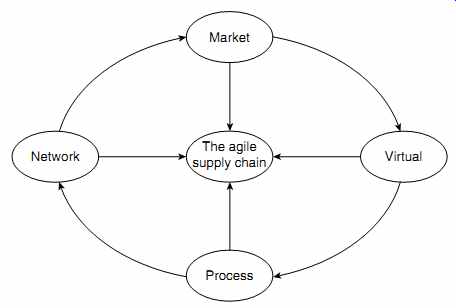
FIG. 1 Theoretical framework for creating the agile supply chain
Operating Circumstances Requiring Agility
Factors previously introduced include demand volatility, product variety, forecastability and 'fashion-type' short life cycles and fast delivery. Van Hoek and Harrison (2001) introduced demand and supply characteristics as dimensions impacting the relevance of agile versus alternative approaches (FIG. 2).
The relevance of factoring in demand and supply characteristics lies in the notion that creating the agile supply chain is about linking supply capabilities to demand requirements. In this respect, demand and supply 'characteristics' may be too general a term. There is an underlying dynamic between the two dimensions: supply abilities are to be created in response to demand requirements. Then one may think of the two dimensions as 'demand' indicating the viability of agility, and 'supply' indicating the feasibility of agility.
Responding to demand with a short lead time is a relevant feature of responsiveness to demand - but it also is a relatively basic one. It certainly does not capture a comprehensive set of responsiveness enhancers. When considering relevant agile capabilities, additional operating contingencies should be included. The remainder of this section will discuss demand and supply contingencies to be included in the categorization for operating environments.
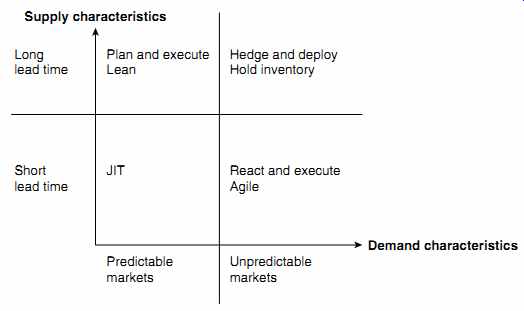
FIG. 2 Leanness and agility under demand and supply---Supply characteristics;
Demand characteristics
Demand contingencies
Returning to lead times, the length of response time is predominantly a relative measure; when developing a cross-industry categorization for operating environments the absolute length in weeks, days or hours may be less relevant than the relative length. Lead-time tolerance is often the most relevant factor, as it captures any leeway that supply chains have in responding to demand. It also incorporates the fact that reliability of delivery may be more important than absolute lead time. A lead-time tolerance, therefore, contains both a speed and a reliability element.
'Forecastability' of demand is a better measure than predictions of market conditions because it is more closely linked to supply chain management capabilities. Market conditions are generally very difficult to predict at the detailed level (of individual stock-keeping units (SKUs), for example), but that does not mean that companies cannot forecast demand relatively accurately. More importantly from the contingency point of view is the fact that forecastability includes a supply chain management requirement of aligning mid- to longer-term capacity decisions to demand, rather than the hard-to-predict market conditions. Of course, one might argue that an ultimately responsive system removes the need to forecast, but this is more of a theoretical perspective than a realistic one. Irrespective of the supply chain's responsiveness to actual orders, companies still have to forecast for mid- to longer-term factors, including advanced orders to suppliers, long cycle-time production processes and capacity-building plans.
Demand for a product is rarely stable, but contains spikes and valleys.
It is traditionally difficult to accommodate this variance in demand across a given time period, because every supply chain has a limited capacity and other constraints, such as maximum order volumes or limits on the availability of expensive slack capacity. However, there are two underlying features here: the difference between peak and valley of demand, and the frequency with which up- and downswings occur.
For the latter, a standard seasonal pattern may have just one peak (in the summer for garden furniture, for example), whereas the fashion industry may have a minimum of six or eight seasons. Retail promotions may have peaks every other week. These seasonal swings in demand may be significant, with peak demands often accounting for 60 to 70 percent of total demand.
FIG. 3 shows an operation of the above three demand contingencies -- lead-time tolerance, forecastability and variance in volume.
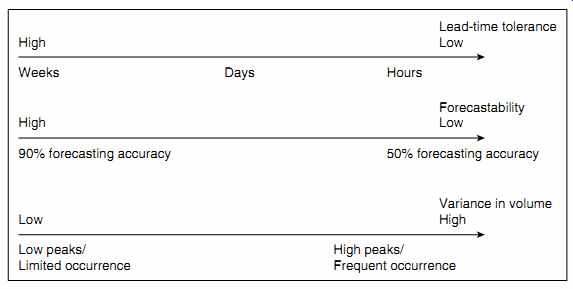
FIG. 3 Demand contingencies impacting the viability of an agile supply
chain
Supply contingencies
What are key supply contingencies that impact the feasibility of creating an agile supply chain? It is in this area that most gaps in current knowledge exist, as most of the publications on agile supply chains focus on the relevance of the approach itself in modern markets. Given the strength of this argument in favor of agility, and its importance in the current uncertain economic landscape, it is time to move beyond this basic view and consider the four layers (at least) of supply contingencies -- or requirements for an agile supply chain.
'Postponement' has been widely identified as a mechanism that can support the creation of responsive supply. Delaying inventory allocation in the supply chain creates hedging options for responding to demand.
This logistics postponement (delaying time and place functionality decisions) is helpful in the distribution segment of the supply chain but ultimately offers only partial responsiveness. It still assumes that stocks of finished goods build in anticipation of unknown demand, with all the risks of stock-outs still largely in place. Stock-outs generally have a very high cost in agile environments. It is for this reason that 'form postponement' is used -- to delay the specification of final form and function of products until the last moment. Many companies do this by delaying packaging, labeling, adding documentation or product peripherals.
Extending postponement into manufacturing, assembly, module manufacturing etc may help create the greater flexibility required for agility.
Associated with the need for form and function customization is the manufacturing and engineering principle of 'design variance' across products and product lines. In order to achieve levels of customization beyond the appearance of products, designs may have to vary beyond packaging -- even beyond modules and into components and more basic features of design. This creates obvious design, manufacturing, sourcing and inventory complexities, which have to be dealt with in agile operating environments. This contingency also shows how creating an agile supply chain requires more than revising logistics and distribution management -- it can have an impact all the way back to product design. The impact on suppliers and trading partners is discussed in the next contingency.
'Supply chain partner modularity' specifies the extent to which individual companies participating in the creation of an agile supply chain will have to align operations through the redesign of management practices and interfaces for the flow of goods and information. Some examples may help clarify this. Traditional sourcing and contract logistics has a buy-sell approach that suggests interfaces limited to a transactional level; just-in-time (JIT) sourcing has more extensive interfaces with sharing of demand data and alignment of operations. Integrated contract manufacturing, in which a third party controls the majority of build and make operations, extends the interface beyond aligned supply into integrated form and functionality creation. Fourth-party logistics is similar to this, with a third party taking over the organization and coordination of the entire flow of goods, information and management for the entire logistics function, and based around tightly structured interfaces.
These approaches lead to a modular supply chain in which boundaries between partners are blurred and players are all orchestrated around real demand and service to the end customer.
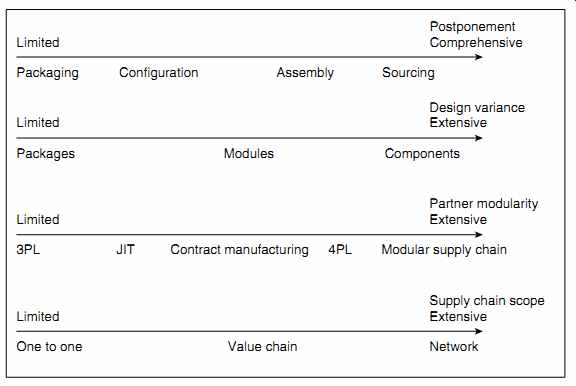
FIG. 4 Supply contingencies impacting the feasibility of an agile supply
chain
It is important to note here that this contingency is not limited to upstream suppliers, but also involves the downstream trading partners between the company and end customer. This is traditionally a hard set of interfaces -- compared with upstream suppliers who are paid for their supply efforts, giving companies an obvious lever in the structuring of these interfaces. The implication of agile reasoning, however, is that downstream partners and direct customers can also encourage alignment around this approach. Then channel interfaces should be structured around end-customer demand contingencies. Service to the end customer gives the key to this; it is an objective that all supply chain players share and where there is significant unification in purpose and objectives.
This brings us to a final contingency, which is the 'supply chain scope'. In order to completely meet the standards demanded for customization, modularity and partner integration, the scale or scope of supply chain involvement may be significant. It goes far beyond traditional views, and develops one-to-one interfaces that extend into a 'value chain'. A value chain is a sequence of one-to-one interfaces leading up to a customer, while a supply chain has many-to-many interfaces and inter connections, which must be dynamically rearranged around key processes and players in response to real demand. A network approach is far more appropriate here.
FIG. 4 shows an operation of the above four supply contingencies - postponement, design variance, partner modularity and supply chain scope.
The Categorization for Operating Environments
FIG. 5 shows a categorization for operating environments based on the contingency factors introduced in the previous section. In the categorization a number of alternative approaches to agility are mentioned.
The first consideration is to distinguish A, B, C products -- based on Pareto analysis. Here A products (accounting for 80 percent of volume and 20 percent of orders) are more standardized, and the greater forecastability, lower volume variance and less customization make them more suited to lean approaches. B products are more variable and more suited to agility.
Efficient customer response (ECR) and Quick Response are generally better in environments where demand requirements particularly impact delivery and distribution, but have less effect on upstream operations.
Mass customization is generally better in environments with modest to significantly challenging demand that can be met with medium postponement and customization.
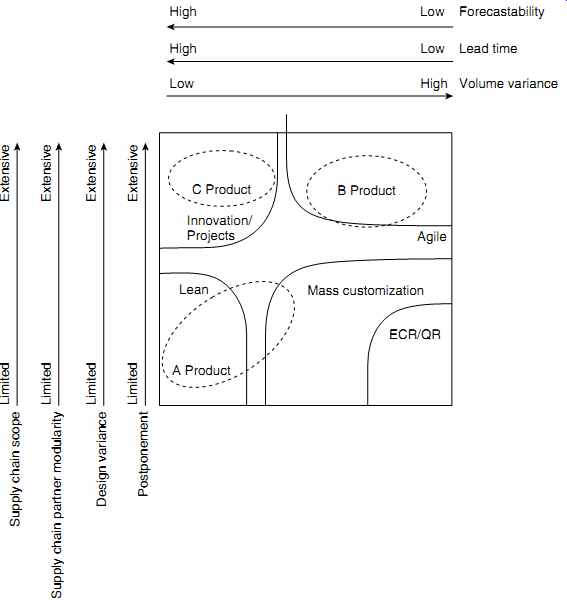
FIG. 5 Categorization of operating environments
Agility is positioned near project environments. This is the right place from a supply contingency point of view, but is not so good from a demand contingency perspective. For example, in environments of innovation and single projects, lead-time leeway is often significantly bigger.
With contingencies and operating environments considered, the question that remains is: how to avoid pitfalls in implementing agility? This is the focus of the next section.
Mitigating the Minefield of Pitfalls
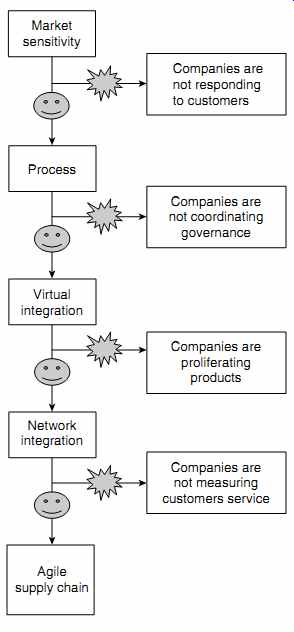
FIG. 6 The 'minefield' of creating the agile supply chain
FIG. 6 conceptualizes the 'minefield' of creating the agile supply chain. If all goes well, companies accomplish the four central dimensions of the agile supply chain as introduced in the previous section. However, lacking practical guidance and experience, there are pitfalls at every step of the way and companies can be found to be:
not actually responding to the customer as opposed to creating 1.
market sensitivity;
not coordinating governance, which allows for too much or too little 2.
responsiveness as opposed to virtual integration;
proliferating product in meaningless and valueless areas due to 3.
failures in process integration; and despite a coming focus on service, not actually measuring that, 4.
leading to failed network integration.
Poor response to customers It is common practice for companies to measure customer service in multiple ways. Customer satisfaction is the most widely used measure.
However, there are several challenges with customer satisfaction measurement and surveys:
Averages scores hide extremes at the end (problems and excellence).
What opinions and strategies are behind subjective measures? Who is speaking? There are many different voices within the customer organization.
What is the value of individual responses averaged out (innovators, key accounts, marginal accounts)? A lack of clear implications for service (what does a 3.75 mean in comparison to a 3.95 score?).
In response to these challenges, companies like GE, Honeywell and the Ford Motor Company have developed voice of the customer (VOC) processes. These aim to go beyond customer satisfaction measurement by crafting a more comprehensive exchange with selected customers.
Typical features of this exchange include:
Senior manager to senior manager meetings to avoid leaving the exchange to revenue-pressured situations, to signify commitment and to elevate the conversation.
Expansion of the interaction to an ongoing exchange to drive beyond measurement at points in time only and establish sustained improvement and alignment.
Involving additional functions, including logistics and engineering, and multiple contacts on the customer side in order to broaden the exchange into a bidirectional learning and alignment opportunity.
Establishing joint improvement initiatives to turn the exchange into more than a listening exercise, including so-called 'at the customer - for the customer' teams.
The key distinctions between voice of the customer processes and customer satisfaction measurement are:
It is based upon conversation, not surveys, which helps capture the story behind the survey scores and learn more about what actually drives scores.
It is not the task of the customer service department but often starts with a senior executive sponsor talking to a customer peer and is followed by cross-functional work groups at a management and execution level working together on improving responsiveness and process alignment where that matters to the customer.
It is ongoing, not a point measurement, as initial conversations are followed up with reviews of process improvements.
It is customer centric as opposed to measuring average market performance scores.
It captures multiple inputs from the customer, not just a single respondent; this is important because there are many voices of the customer and it matters who is talking.
It is linked to action, with project teams deployed 'at the customer, for the customer'; hence the outcomes of the review are not internalized but used as a basis for customer-focused action.
It actually improves customer relations owing to improved learning about the customer, relationship development and resource investments to address service issues, and improvement opportunities.
Overall, voice of the customer leads to much better market sensitivity as opposed to running the risk of misguided interpretation, or limited channels for capturing market input.
Governance does not support virtual integration Agility requires the ability to be able to respond to local market requirements and opportunities. But this does not mean that companies should not aim at leveraging skills and capabilities across the regions in which they operate -- let alone avoiding reinventing the wheel across parts of the organization. Local responsiveness and global efficiency need to be integrated into a network organization that is a virtually integrated entity, despite operating in multiple locations and regions.
One way in which I coped with this pitfall at Nuon (a $6bn European utility) when I worked there in the procurement organization was to use account plans with internal stakeholders and customers to balance business needs and local considerations with global category opportunities. The account plan was a simple one-page template used to capture priorities in collaborating with the business, ensuring alignment between procurement and internal customers and stakeholders without being able to control those business unit peers directly. Effectively this account planning was used as a practical way to achieve virtual integration.
Around the annual business planning cycle, procurement would discuss with the business unit its main priorities for the coming year and how procurement could help achieve those. Main areas for joint focus and projects or collaborative initiatives between procurement and the business unit would be captured, including key performance indicators (KPIs) to measure success. During the year the plan would then be revisited in a discussion between procurement and the business unit's management team to evaluate results so far and progress in the collaboration. Using account planning proved an effective way to keep governance simple yet practical and work oriented.
Meaningless product proliferation
A particular area of concern when it comes to process integration is product proliferation. Owing to process misalignment between several parts of the supply chain, companies often end up proliferating products, driven by internal misalignment rather than market driven. How this often happens is that R&D wants to innovate and expand product ranges, sales wants to create more opportunities to sell, while supply chain and operations want to avoid margin reductions from cost of complexity in operations. A lack of process integration leads to uncontrolled efforts disconnected from market opportunity.
New products are created, hoping that this will aid in growing the business by offering more revenue opportunities. In theory this improves the ability to respond to customer demand. In reality, however, companies typically get a lot of product proliferation wrong and end up creating too many products that do not sell, adding cost and needless complexity into their supply chain.
One company found that the bottom 25 percent of products generated less than 1 percent of revenue and were actually unprofitable, reducing the company's overall profit. Another company saw its SKU count double in two years, with SKU growth far outpacing revenue growth, resulting in a reduction of volumes per product and return on investment in designing and marketing products - while mushrooming the cost of warehousing. While all of this is happening the supply chain is left holding the bag, with the business not really owning any responsibility for SKU management. One warehouse manager of this company said: 'When I meet people from the business I ask them how many SKUs they have in the warehouse. They never get it right and always underestimate.' To summarize, common flags for product proliferation include:
growth of SKU count outpacing revenue growth; 1.
SKUs that do not meet revenue and volume thresholds for generating 2.
Return on design, marketing and shipping them;
SKU management is not distributed across the business and there is 3.
No accountability for, or even transparency of, SKU proliferation in the business.
Additional complexity flags can be found in the warehouse and sales, including:
Warehouse flags:
Ongoing order and shipment size reduction; - a constant need for more stock-locations in the warehouse; - nightshifts and rush shipments outside seasonal peaks. - Sales flags:
a catalogue that is as thick as the Yellow Pages, running the risk of - confusing customers;
more products than any sales person could every carry in the boot - of a car;
special SKUs are being added based upon special (key-)customer - requests, events or market opportunities but they may not be removed after the event.
Faced with a lot of the bad consequences of SKU proliferation outlined above, Company A, a consumer products company, has reduced SKU count by 30 percent during the past three years while growing the company and adding new products, breaking away from flag 1. It did so by actively managing to avoid flags 2 and 3. The company initiated an SKU management effort -- introduced by the CEO -- with a mandate that 50 percent of SKUs that do not meet revenue thresholds will be cut each quarter.
The reason for the target being 50 percent and not 100 percent is that new products are being developed in the market that might not yet have come to flourish fully, there are products that do not perform steadily every quarter (because of seasonality, for example), and it leaves the business some autonomy in making cut decisions. Key to this approach is that it establishes SKU management as an ongoing discipline. A lot of companies do one-off efforts but a manager from Company A says:
'Without sustaining the management focus SKU count is likely to creep back up in no time. You cannot expect behavior to just change without ongoing focus and accountability.' In order to accomplish this accountability, SKU count has been elevated to one of the measures on the global dashboard that is reviewed monthly by the senior executive team. Additionally, a so-called 'glide-path' has been established. This is a set of SKU reduction targets on a timeline. In addition to sustaining the focus on - and accountability for - SKU reduction, incorporating the SKU count on the dashboard also removes decisions from the execution level. The supply chain team has dedicated a person to the SKU effort and this person creates transparency to the business about its SKU count, flags them when they are not on the glide-path and offers help in reducing the SKU count. Because senior management owns the outcomes of the effort at the dashboard level the supply chain team is positioned as aiding the business rather than being the bad guys. Furthermore, it removes discussion about the effort from the execution level. According to the senior supply chain executive, this is important because otherwise, 'you end up with emotion involved at this level resulting in endless discussion instead of focused action'.
Incorrect measurement that focuses responsiveness wrongly
All companies include customer service in some form in their performance measurement system. However, almost all operation this measurement internally, leading to responsiveness that is misguided and focused wrongly -- not being directly and fully on customers. In particularly, most companies measure delivery service in one or multiple ways based upon their internal definition of success. Typically the measures focus on how reliably and fast the company delivered against the timetable it put forward. This misses the point, as this timetable might not be aligned with the customers' needs. So companies are not tracking responsiveness to customer need at all. The better way is to ask customers for their desired delivery window and measure execution against that customer-defined measure of success. General Electric realized this when it presented high delivery reliability scores from its own measurement to customers and received a negative reaction. In short, customers reacted that performance was not at all good according to their own measurement, which considered the time when they needed deliveries to take place.
============
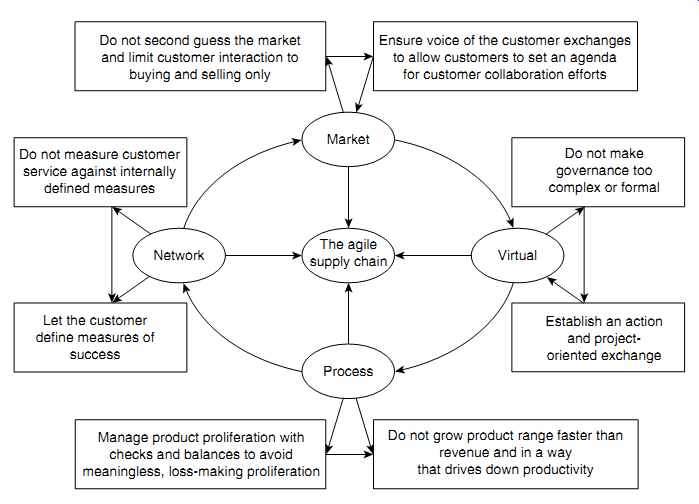
FIG. 7 Enhanced agile supply chain theoretical framework
Establish an action and project oriented exchange Market The agile supply chain Network Virtual Do not make governance too complex or formal Process Ensure voice of the customer exchanges to allow customers to set an agenda for customer collaboration efforts Do not second guess the market and limit customer interaction to buying and selling only Do not grow product range faster than revenue and in a way that drives down productivity Manage product proliferation with checks and balances to avoid meaningless, loss-making proliferation Do not measure customer service against internally defined measures Let the customer define measures of success
===========
GE changed its measurement set towards what it calls span measurement. Span stands for the range of delivery around customer requested due dates. Essentially, the company now measures, across all deliveries globally, how close it was to the delivery date the customer requested when ordering. In its plastics business the company brought Span down from 30 days to just a few days -- meaning that every customer can depend upon GE delivering any product, anywhere in the world, when they ask for it, with a maximum variation of a few days.
Experience from GE suggests the value of several actions to improve measurement for agility:
Share measurement dashboards with customers, and aim to measure your performance using the measures that customers use to measure your company.
Do not measure against your own measures of success, but ask the customer what defines success.
Hold all parts of the supply chain accountable against the customer defined measure of success, so that there is no escape from market sensitivity.
Enhancing the vision of agility
This section has offered practical findings from aspiring practitioners, several years of research and dozens of case studies. As valuable a starting point as the theory surrounding the vision of creating an agile supply chain is, it is still only vision-centered. The experiences and cases presented in this section show where the vision can be supplemented, thereby enhancing the theoretical framework presented in FIG. 1. FIG. 7 captures the particular axioms identified and visually displays the enhanced agile supply chain theoretical framework.
Conclusion and Reflections
This section has attempted to offer additional insight into the questions of where and how to consider developing agile capabilities in the supply chain. The identification of operating environments that favor -- or disfavor -- agile supply chains gives a more realistic chance of successful implementation. Avoiding the implementation pitfalls will further increase the likelihood of success.
As one of the authors of the original agile supply chain vision, I would like to apologize to the head of supply chain referenced at the start of this section -- I hope that this contribution will be more helpful and make up for the shortcomings of the original vision.
top of page Home Similar Articles
